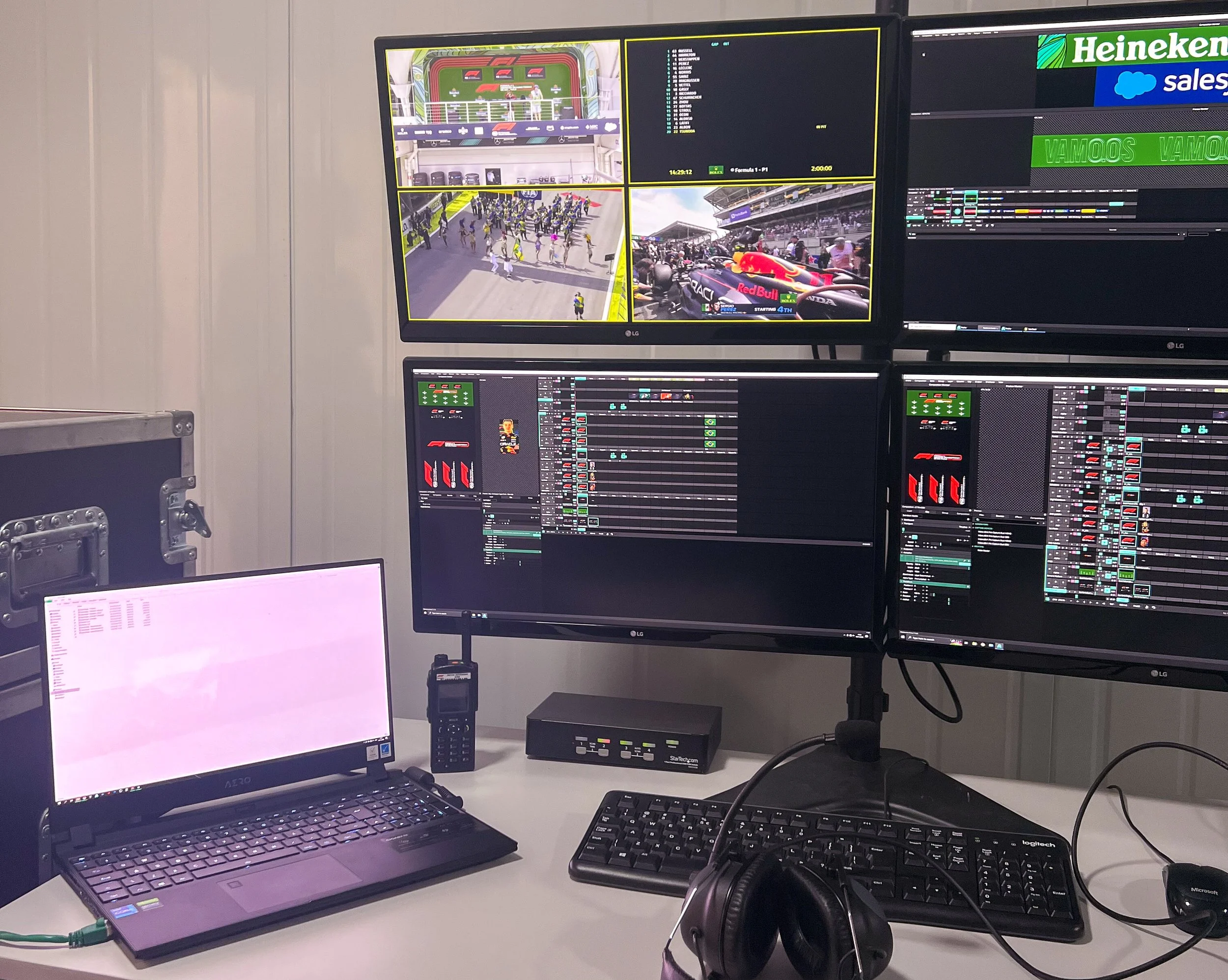From Designer to VJ: How I ended up running the F1 Podium screens around the world.
If you told me in a few years ago, that I’d one day be controlling the content on the F1 podium, on-site at every Grand Prix, I’d have said you were crazy.
It started with cutting highlights reels in After Effects, rendering them with fingers crossed, and physically running (on the last lap of the race) to the podium with a USB stick, and plugging it into a laptop running Windows Media Player. It was chaos, and weirdly enjoyable. But I knew there must be a better way.
Fast-forward to 2021, and I was leading a team operating custom-built media servers, sending live race replays directly from F1’s ETC (Event Technical Centre) to the Parc Fermé interview screens, the Cool Down Room, and the Podium, within seconds of the chequered flag. Real-time graphics, bespoke layouts, F1 global partner branding, all seamlessly integrated, and broadcast worldwide.
Tech
The backbone of the setup was high-end custom built media servers, but these weren’t just playback rigs, they needed to provide a completely flexible workflow, designed to bring creative content to life in a high pressure live environment filled with last minute requests. We coule run custom layouts to any screen, and sent video directly to the podium. We sent video over short, and extremely long distances through Blackmagic converters (race tracks are ridiculously hostile environments). We used SDI inputs to ingest multiple live feeds, connecting directly to F1’s main gallery, meaning our content could inclued live race footage and angles from almost ay camera instantly, mapped and curated to work with our unique layouts.
Depending on how the race unfolded, we could respond in real time, adapt visuals to the moment, and maintain the polished F1 look that the world expects.
2022 São Paulo Grand Prix
But… why?
I get asked this a lot. How does a designer end up standing behind LED processors and signal converters at the back of the F1 podium?
The truth is: it was part of the creative process. It started with designing the podium and the ceremony around it, but when things weren’t possible because of technical limitations, I found myself pushing to make changes.
Design is about ideas, and for me, this was about seeing those ideas through—not just on a screen in an edit suite, but out in the real world. I wanted to prove what was possible, try new things, and first-hand experience was my way of doing that. There was a lot of joining the dots and a huge amount of trial and error, but what we ended up with broadened the scope massively. It was quite a thrill having to make things work when they had to work. No retakes, no “we’ll fix it in post.”
It was also about pushing myself. Pushimg myself to learn new tools and try new things. I’m extremely grateful for the trust from F1, and and for the team around me helping to piece it all together.
From USB Sticks to Real-Time Replays
This whole journey, was a massive learning curve. I didn’t start as a technician. I learned hardware on the job, figured out video standards in airport lounges, debugged converters during sound checks, but it’s taught me skills that still help me every day.
But more than anything, I learned how to lead. To take a creative vision and make it not just look great, but work flawlessly in one of the most demanding live environments on the planet.
If you’re a creative reading this and wondering if live operation is “too technical” or “not your lane,” I’d challenge that. The tools might look different, but the creative muscle is the same. It’s about telling stories in real time, with motion, timing, and emotion. And honestly? There’s nothing quite like seeing your work actually happen, not just render.



